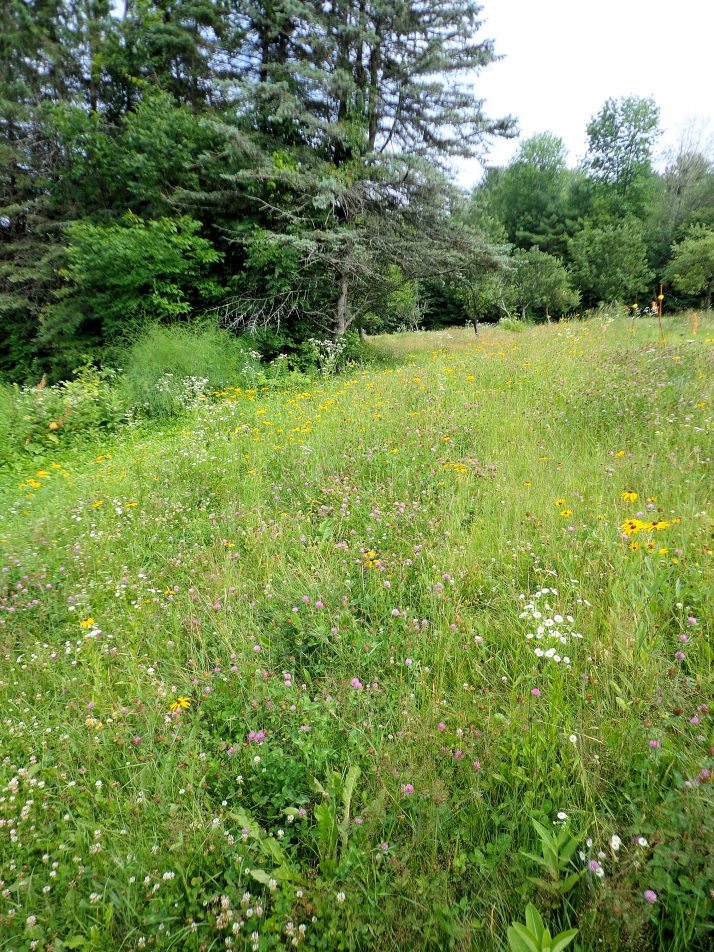Wild bees and butterflies thrive on the abundance of flowers from what many would consider weeds. Field flowers like clover, daisy, Black-eyed Susan, milk weed, aster, dandelion, bindweed vetch, and the flowers of the grasses provide a banquet of nectar and pollen to support the insects. Song birds also use the wild plant seeds and nectar and eat the insects. Compared to a wild field, a lawn is as sterile as a desert for the bugs. Cultivated flowers don’t produce the plethora of nutrients provided by wild plants.
 With the dire reports one reads of the decrease in the populations of wild bumblebee and other bees and butterfly populations, I’ve decided to dedicate areas on our farm for these insects. Places that are difficult to mow have now become insect sanctuaries. The steep side of our septic system has always been a problem to mow. I once had the horses crop it for me. This year I fenced it so that the area was allowed to grow naturally. Wildflowers quickly filled the space. Another rough area is now dedicated to jewelweed, the hummingbird’s favorite flower.
With the dire reports one reads of the decrease in the populations of wild bumblebee and other bees and butterfly populations, I’ve decided to dedicate areas on our farm for these insects. Places that are difficult to mow have now become insect sanctuaries. The steep side of our septic system has always been a problem to mow. I once had the horses crop it for me. This year I fenced it so that the area was allowed to grow naturally. Wildflowers quickly filled the space. Another rough area is now dedicated to jewelweed, the hummingbird’s favorite flower.
I also let wildflowers like milkweed, mullein, thistle and wild carrot grow along the fencelines and the edges of the orchards and hayfields. To produce hay, pasture and apples, grass and wildflowers must be mowed. But they do not need to be entirely eradicated. There is plenty of space around the edges for flowers and butterflies. I wish all farmers, gardeners and lawn owners could find room for the wild plants and not pull all the weeds or dose everything with weed killer.

You must be logged in to post a comment.